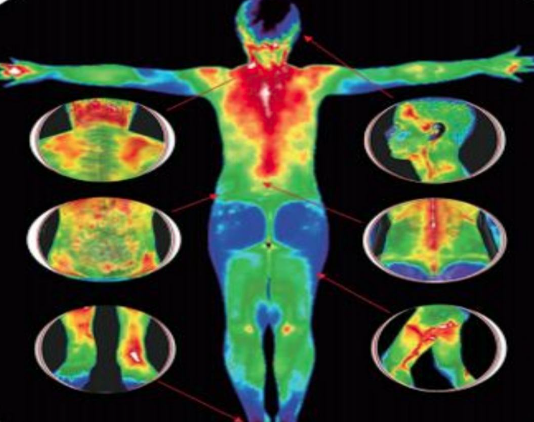Infrared thermal imaging technology is a mysterious science that visualizes the temperature of objects. This article intends to discuss it in depth and breadth, and let us enter this world composed of heat energy, light waves and mathematical equations. We will first explain how this technology uses infrared radiation to achieve accurate temperature measurement, and then analyze in detail how it demonstrates its multi-dimensional value in multiple application scenarios. In addition, it is also worth paying attention to the aspects in which infrared thermal imaging shows superiority compared with traditional temperature measurement technology. Finally, let’s predict where this technology might be heading in the near future.

Principle of accurate temperature measurement: infrared spectrum and object thermal radiation
Infrared thermal imaging technology uses the infrared radiation energy emitted by the object itself to construct a detailed distribution image of the surface temperature of the object. This involves not only simple heat energy transfer, but also a complex optical and thermodynamic problem. There is a clear mathematical relationship between the temperature of an object and the infrared radiation it emits, usually described by Planck's equation. By receiving this radiant energy, infrared thermal imaging equipment can accurately reconstruct the temperature distribution on the surface of the object. Such non-contact temperature measurement effectively avoids errors caused by heat exchange between the sensor and the object being measured, and greatly improves the accuracy and efficiency of temperature measurement.
Multi-dimensional application scenarios: beyond traditional boundaries
Military perspective: Not only are there advanced applications for battlefield reconnaissance, but also drone navigation and target identification. Infrared thermal imaging technology can help battlefield reconnaissance accurately locate enemies or targets in darkness or complex weather conditions.
Medical field: Temperature is an intuitive response to the state of the body. The application of infrared thermal imaging technology in early cancer screening and skin damage diagnosis provides a new perspective, allowing doctors to quickly and accurately determine the condition.
Building assessment: Assessing a building's energy efficiency, finding leaks, and even observing subtle structural problems can all be achieved with infrared thermal imaging technology.
Industrial Manufacturing: In manufacturing, this technology helps detect mechanical failures early, perform preventive maintenance, and ensure product quality.
Each application scenario is an independent and complex system. Infrared thermal imaging technology has effectively solved a variety of practical problems with its unique advantages.
Innovation superiority: contactless, efficiency and multi-dimensional information
Infrared thermography not only overcomes the limitations of traditional contact temperature measurement methods, but also demonstrates other significant advantages. For example, it can scan an entire area in a short time and present the temperature distribution, while also providing additional information such as humidity, air velocity, etc. This multi-dimensionality and high efficiency allow infrared thermal imaging technology to demonstrate irreplaceable value in many fields.
Forward-looking development path: high resolution, portability and intelligent applications
The continuous advancement of technology indicates that infrared thermal imaging equipment will reach new heights in terms of resolution, portability and intelligence. High resolution will further improve temperature measurement accuracy, portability will allow this technology to be widely used, and the combination of artificial intelligence and machine learning technology can expand to more automated and intelligent application scenarios.
Taken together, infrared thermal imaging technology has been widely used in many industries due to its precise temperature measurement principle, multi-dimensional application scenarios and innovative advantages. More importantly, this technology also has huge potential for future development, whether in terms of resolution, portability or intelligent applications. As long as science and technology continue to advance, the application prospects of infrared thermal imaging technology will be broader.
